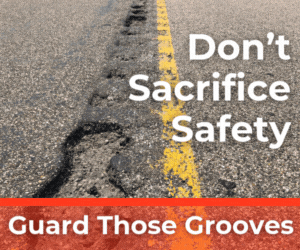More than one quarter (27 percent) of the nation’s major urban roads (interstates, freeways and other arterial routes) have pavements that are in substandard condition and provide an unacceptably rough ride to motorists, costing the average urban driver $377 annually, a total of $80 billion nationwide, according to a report released this month by TRIP, a national transportation research group.
In some areas, driving on deteriorated roadways costs the average driver more than $800 each year. Driving on roads in disrepair increases consumer costs by accelerating vehicle deterioration and depreciation and increasing needed maintenance, fuel consumption and tire wear.
The full report, “Bumpy Roads Ahead: America’s Roughest Rides and Strategies to Make our Roads Smoother,” examines urban pavement conditions, transportation funding and economic development. Additional pavement condition and vehicle operating costs for urban areas with populations of 250,000 or greater can be found in the report and appendices.
The list below shows large cities (500,000+ population) with the highest percentage of pavements in poor condition.
1. LA-Long Beach-Santa Ana, CA
2. San Francisco-Oakland, CA
3. San Jose, CA
4. San Diego, CA
5. Tucson, AZ
6. New York, NY-Newark, NJ
7. Bridgeport-Stamford, CT
8. Milwaukee, WI
9. New Orleans, LA
10. Oklahoma City, OK
11. Tulsa, OK
12. Seattle, WA
13. Honolulu, HI
14. Sacramento, CA
15. Concord, CA
16. New Haven, CT
17. Riverside-San Bernardino, CA
18. Springfield, MA
19. Boston, MA
20. Hartford, CT
The list below details the 20 mid-sized urban areas (250,000 to 500,000 in population) with the highest percentage of pavements in poor condition.
1. Antioch, CA
2. Reno, NV
3. Santa Rosa, CA
4. Trenton, NJ
5. Hemet, CA
6. Spokane, WA
7. Jackson, MS
8. Temecula-Murrieta, CA
9. Worcester, MA
10. Stockton, CA
11. Corpus Christi, TX
12. Des Moines, IA
13. Madison, WI
14. South Bend, IN
15. Davenport, IA
16. Baton Rouge, LA
17. Scranton, PA
18. Fort Wayne, IN
19. Modesto, CA
20. Anchorage, AK
“With state and local governments struggling to fund needed road repairs and with federal surface transportation funding set to be slashed next year, road conditions are projected to get even worse,” said Will Wilkins, TRIP’s executive director. “Congress could reduce the extra costs borne by motorists driving on rough roads by approving funding that will support a federal transportation program that improves road conditions on the nation’s major roads and highways.”
View the full report here.
TRIP is a nonprofit organization that researches, evaluates and distributes economic and technical data on surface transportation issues.













